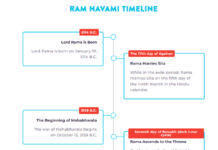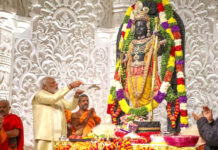 CHICAGO: Yoga has been catching up fast in USA with many Americans opting for it for better mental and physical health, according to a survey conducted by Yoga Journal & Yoga Alliance.
CHICAGO: Yoga has been catching up fast in USA with many Americans opting for it for better mental and physical health, according to a survey conducted by Yoga Journal & Yoga Alliance.
The “2016 Yoga in America Study” revealed that yoga practitioners have reached the level of 37 million. It will not be surprising that the number may cross 50 million in the next couple of years, judging by the pace with which has grown in the last two years.
According to USA’s National Institutes of Health, yoga may help one to feel more relaxed, be more flexible, improve posture, breathe deeply, and get rid of stress. Yoga was the repository of something basic in the human soul and psyche.
This comprehensive national study points out that there is about 50 percent increase in the number of yoga practitioners in the last four years; raising the annual practitioner spending on yoga classes, clothing, equipment, and accessories to $16 billion.
The Study also indicates that 86 percent of practitioners self-report having a strong sense of mental clarity and 79 percent give back to their communities-significantly higher rates than among non-practitioners.
Among all Americans; 34% (over 80 million) say they are likely to try yoga for the first time in the next 12 months, 28% have participated in a yoga class at some point in their lives, 90% are aware of yoga and 75% agree “yoga is good for you”. Yoga is strongly correlated with having a positive self image, the Study adds.
Although introduced and nourished by Hinduism, yoga was a world heritage and liberation powerhouse to be utilized by all, according to Rajan Zed, President of Universal Society of Hinduism. He pointed out that yoga, referred to as “a living fossil” whose traces went back to around 2,000 BCE to Indus Valley civilization, was a mental and physical discipline for everybody to share and benefit from. According to Patanjali who codified it in Yoga Sutra, yoga was a methodical effort to attain perfection through the control of the different elements of human nature, physical and psychical
Much of yoga’s appeal is the fact that it can be traced back roughly 5,000 years. In a world of exercise trends and diet fads, it’s a tradition that has stood the test of time. Traditionally, Yoga (Sanskrit for “divine union”) has one single aim: stilling the thoughts of the mind in order to experience one’s true self, and ultimately, to achieve liberation (moksha) from the cycle of birth and death (samsara), or enlightenment.
The Westernized, modernized form of the ancient practice expresses just one component of what was originally considered yoga. The physical practice of postures, or asana, is one of eight traditional limbs of yoga, as outlined in the foundational text of yoga philosophy, The Yoga Sutras of Patanjali, thought to be over 2,000 years old.
These limbs present a sort of eightfold path to enlightenment, which includes turning inward, meditation, concentration and mindful breathing. The Sutras make no mention of any specific postures, but the original 15 yoga poses were later outlined in the Hatha Yoga Pradipika, dated 15th century CE, making it one of the oldest surviving texts of hatha yoga, the yoga of physical exercises.
Surendra Ullal






